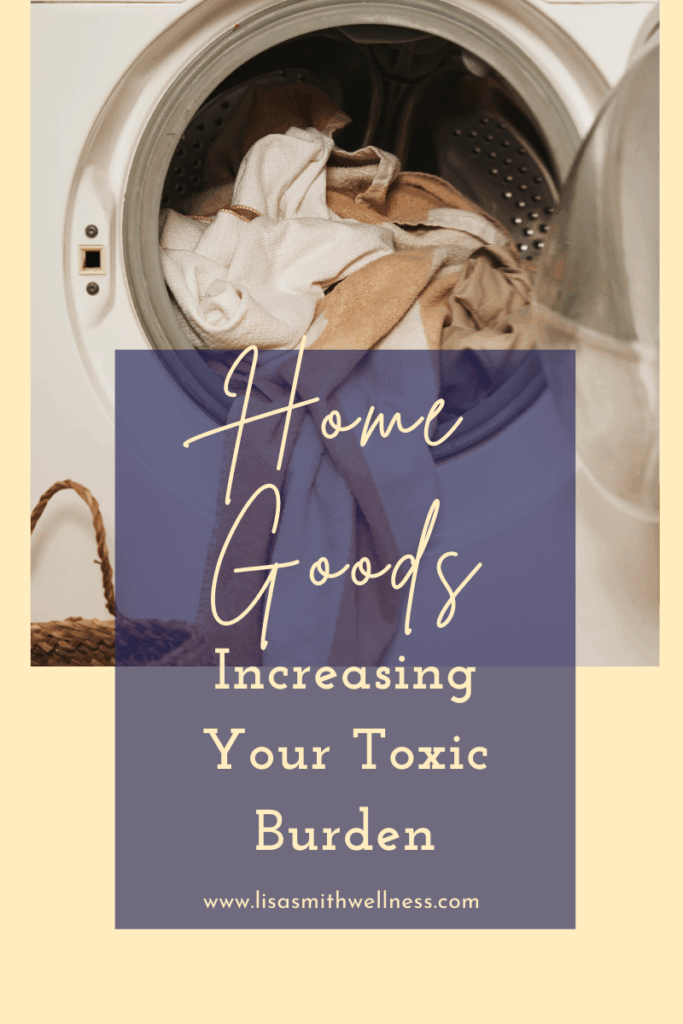Are there toxins in your home? Our homes are supposed to be sanctuaries—the one place where we can breathe deeply, recharge, and escape the chaos of the outside world. But here’s the kicker: in many cases, our indoor air is actually more toxic than the air outside. Yep. You might be sitting in your beautifully curated living room, sipping tea, burning a candle, and unknowingly breathing in a toxic cocktail that’s slowly working against your health, hormones, and even your skin.
The truth is, modern convenience often comes with hidden costs. Those cozy little add-ons designed to make life smell better, feel softer, or look prettier? Some of them come with chemicals that disrupt your hormones, damage your gut, and silently accelerate the aging process. Functional medicine has been telling us for years: toxins don’t just “float away.” They build up in the body, add to our toxic load, and interfere with the very systems that keep us vibrant, youthful, and well.
So, if you’ve been struggling with headaches, skin flare-ups, hormonal chaos, or that “mystery fatigue” no one can quite explain, it might be time to take a closer look at what’s happening inside your home. Let’s dig into the top three sneaky offenders and—better yet—I’ll also share some gorgeous, natural alternatives that will make your home feel even more like the sanctuary it was meant to be.
This post contains affiliate links meaning I make a small commission at no extra cost to you. Thank you for supporting the work of Lisa Smith Wellness and the Pretty Well Podcast!

1. Air Fresheners: Breathing in Toxicity
Air fresheners are everywhere—plug-ins, sprays, gels, powders, and even those cute little scented sachets hiding in your drawers. They’re marketed as quick fixes for stale air and lingering odors, promising a “fresh” and “clean” vibe. But the reality? Most air fresheners are anything but fresh.
The Hidden Toxin Problem
- Primary & Secondary Pollutants: When you spray or plug in an air freshener, you’re releasing volatile organic compounds (VOCs) straight into your air. Worse, when these VOCs interact with other compounds (like ozone), they create secondary pollutants—an invisible toxic soup you’re breathing in with every inhale.
- Sticky Residues: Ever notice a faint film on surfaces after using certain sprays? Those chemicals don’t just vanish; they cling to furniture, walls, and even your clothes—continuously re-releasing toxins into your environment.
- Hormone Disruptors: Many air fresheners contain phthalates, notorious endocrine disruptors linked to reproductive problems, thyroid dysfunction, and hormone imbalances. They’re like little stealth agents hijacking your biochemistry.
- Cancer Connections: Some contain formaldehyde, a known carcinogen that’s particularly harmful to the respiratory system. Think: asthma, allergies, and increased cancer risk over time.
The Functional Medicine Fix
Instead of “masking” odors with toxins, address the root cause. Just like functional medicine gets to the root of health issues, your home deserves the same love.
- Diffuse Essential Oils: Choose high-quality, third party-tested essential oils. Think lemon, lavender, eucalyptus, peppermint, or (my favorite) patchouli. They don’t just smell good—they actually support your nervous system, calm stress, and purify the air.
- Use Real Freshness: Open windows, invest in a good air purifier with a HEPA filter, and bring in houseplants like peace lilies or snake plants. They’re natural air-cleaners.
- DIY Sprays: Combine distilled water, a splash of witch hazel, and a few drops of your favorite essential oil blend in a spray bottle. Voilà—custom fragrance, zero toxins.
Related Episode: #155 Demystifying Detoxification
2. Candles: The Illusion of Ambiance
Candles are one of life’s simple pleasures. They set the mood, add cozy vibes, and make you feel like you’re living in a lifestyle catalog. But many candles are more toxic than relaxing.
The Hidden Toxin Problem
- Paraffin Wax: The majority of commercial candles are made from paraffin, a petroleum byproduct. When burned, paraffin releases benzene and toluene—both carcinogenic chemicals linked to asthma, allergies, and headaches.
- Soot Particles: Paraffin candles release microscopic soot particles that can lodge deep in the lungs. Not exactly the spa-like vibe you were going for.
- Lead Wicks: Shockingly, some candle wicks still contain lead (even though it’s been banned in many places). Lead exposure damages the nervous system, impacts brain health, and is especially dangerous for kids.
- Artificial Fragrances: The scents in most candles come from synthetic chemicals. These not only irritate the lungs but also mess with your hormones and, you guessed it, add to your toxic load.
The Functional Medicine Fix
You don’t need to give up ambiance—you just need to upgrade.
- Beeswax Candles: 100% pure beeswax candles actually purify the air by releasing negative ions. They burn clean, smell subtly sweet, and support respiratory health.
- Coconut Wax: If you prefer scented candles, choose ones made from food grade or coconut wax with cotton or wood wicks, scented with essential oils only. I use Aroma Naturals – especially love the Vanilla & Peppermint.
- Himalayan Salt Candle Holders: Combine the glow of a candle with the benefits of Himalayan salt lamps for a double win.
Pin this for Later

3. Fabric Softeners: Softer Clothes at What Cost?
Few products are as deceptively marketed as fabric softeners. They promise fluffy towels, cozy sweaters, and static-free socks—but the truth is, those soft, sweet-smelling clothes come at a steep cost to your health (and the planet’s).
The Hidden Toxin Problem
- Chemical Coatings: Fabric softeners work by coating fibers with a thin, oily film of chemicals—often including quaternary ammonium compounds (quats), which can trigger asthma, allergies, and skin irritation.
- Trapped Odors: Instead of truly cleaning your clothes, fabric softeners trap sweat and odors in fabrics. That “fresh” smell? Just a chemical cover-up.
- Hormone Disruptors: Many contain—you guessed it—phthalates and other VOCs that disrupt hormones and affect neurological function.
- Environmental Fallout: Those chemicals don’t stop at your clothes. They leach into wastewater, persist in the environment, and harm aquatic ecosystems.
The Functional Medicine Fix
There are safer, cleaner, and honestly, more effective options:
- Wool Dryer Balls: These naturally soften clothes and reduce static without chemicals. Add a couple drops of essential oil for light fragrance.
- Trader Joe’s Lavender Dryer Bags: These sachets have only one ingredient–lavender–and leave your laundry smelling fresh and inviting.
- Vinegar Rinse: A splash of white vinegar in the rinse cycle naturally softens fabrics and eliminates odors—without leaving your clothes smelling like a salad.
- Upgrade Your Detergent: Choose plant-based, fragrance-free laundry detergents to cut down on chemical exposure.
The Bigger Picture: Why Ditching Toxins Matters for Your Health and Beauty
Toxins aren’t just a vague “bad thing.” In functional medicine, we know they burden your detox pathways (liver, kidneys, skin, and gut), disrupt hormones, and accelerate aging. Breathing in phthalates or VOCs every day can:
- Increase inflammation, the root of most chronic diseases.
- Contribute to hormone imbalances that drive issues like PMS, thyroid dysfunction, infertility, and fatigue.
- Show up on your skin as acne, rosacea, or premature aging.
- Impact your brain and mood, fueling anxiety, brain fog, or sleep struggles.
By making small but intentional swaps at home, you lighten your toxic load, support your body’s natural detox pathways, and protect your long-term health.
Bonus:
These changes also promote glowing skin, steadier energy, and better hormone balance—because true beauty starts at the cellular level.
Final Thoughts
Here’s the empowering truth: you don’t need to overhaul your entire home in one weekend to make a meaningful difference. Start small. Swap your plug-in for a diffuser. Replace one fragranced candle with an essential oil-scented candle. Ditch the fabric softener and toss in some dryer balls. Each step you take lowers your toxic burden and creates a healthier, more beautiful environment for you and your family.
Your home should heal you, not harm you. By choosing safer alternatives, you’re not just upgrading your space—you’re investing in your longevity, your beauty, and your vitality.
So go ahead. Transform your home, one swap at a time. Your hormones, your skin, your lungs, and even your future self will thank you.
+ view comments . . .